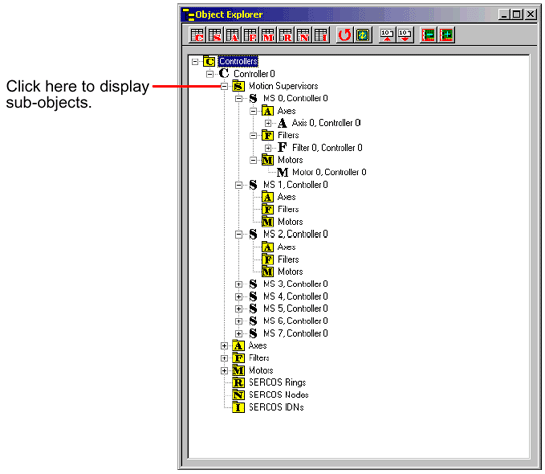| CHAPTER 2 Motion Console |
|
Configuring a Motion SupervisorBecause Motion Supervisors comprise the highest level of object organization (after the controller itself), they provide a convenient starting point from which to map. Mapping will require some forethought. Some of these objects are linked tightly together (e.g., Axes, Motors and Filters); therefore, it is useful to think of them as a single unit, operating under the direction of a given Motion Supervisor. Other objects may operate independently of others. The Object Explorer gives the best single overview of your motion control system. To look at what you have configured, open the object tree below Motion Supervisors by clicking on the file "branch" at this point. It will look something like the object tree shown here: 
In this example, we have displayed some of the objects for MS 0, MS 1 and MS 2. Notice that only MS 0 has sub-objects mapped to it (Axis 0, Filter 0, and Motor 0, respectively). MS 1 and MS 2 have no objects yet mapped to them. In the descriptions below, an example of each object will be mapped to a Motion Supervisor.
Mapping AxesClassically, a single motion axis is powered by a single motor. The XMP's architecture accommodates this traditional arrangement, but also allows more than one motor to be mapped to a single axis. (Through the use of Filters, multiple motors can be configured to operate differently upon the same axis.) For now, do not worry about the type of motor(s) to be used. Think only of the axes of motion. Before further mapping, you should know the following about your motion control system:
After these questions have been answered, you may begin mapping Axis objects to Motion Supervisors. In the examples which follow, it is assumed that objects will be mapped in numerical order (e.g., we will map Motor 1 before we map Motor 2). This is the usual order of progress, although you may do things differently if you prefer. | |